This is the third post in the melody section of the How to Read Music: Piano Sheet Tutorial for Beginners series.
<<<< How to Read Music: Piano Sheet Tutorial
In this post, we’ll dive into the note values, shapes, and their duration in music, and the content is designed especially for piano beginners.
We’ll learn about note values and how long they last using a fun pizza analogy and yummy slices of pizza!
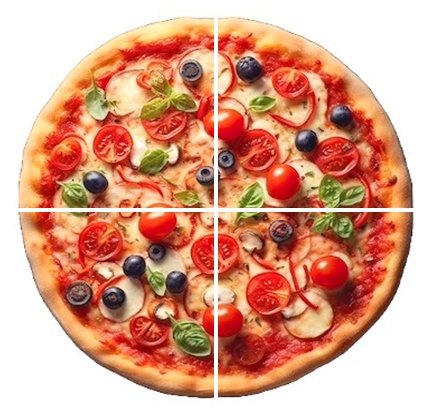
Topics that will be covered in this post are:
- Note shape and its parts
- Different note shapes and their names and values
- What is a beat? in brief
- Note names and their beat values
- Analogy of pizza and its slices for easy understanding of note values.
- Note beat and rhythm using counting and clapping
Music: Sounds and Silences
Music isn’t just about high and low pitch notes; it’s also about rhythm, timing, and silences!
How long or short each note or silence is, determines the rhythm of the music. That’s where note values and duration come in.
Remember the last time you sang “Happy Birthday” or played it on the keyboard? Did you hold long notes on “Birthday” and short ones on “Happy”? That’s all thanks to note values!
Fancy Decorative Shapes on Sheet Music
The following image is a part of sheet music showing notes drawn on staff lines.
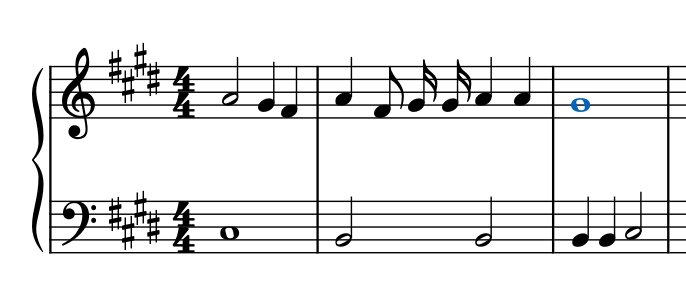
As shown in the above image, have you ever wondered why some notes on the music staff look like round balls while others have flags and tails?
They’re not just fancy decorations! These shapes tell you something very important, which is how long each note should be played.
Note shapes tell us about the note values, which represent the length of time, or duration, for which a note is played.
For Piano Beginners
Understanding note values and their duration is essential for any piano beginner.
By grasping these concepts, beginners can effectively read and interpret sheet music, enabling them to play piano pieces with accuracy and rhythm.
In this post, we will explore note values and duration in simple terms, providing a solid foundation for beginners to enhance their musical skills.
So let’s dive into the wonderful world of musical time together to explore the different lengths of notes, from slow and steady like a turtle to quick and zippy like a rabbit, and learn how to bring them to life on your piano keys.
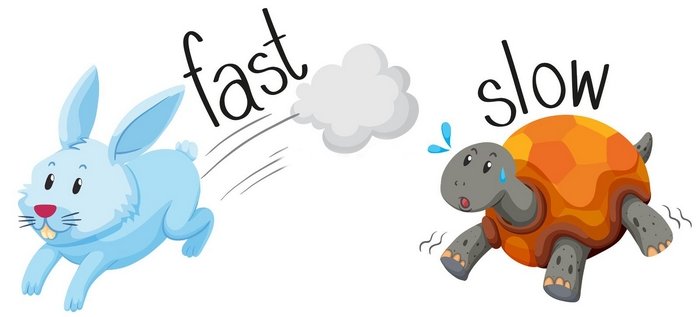
Notes Values or Note Durations
In music, the duration of a note refers to how long it should be held, played, or sustained.
Different note shapes represent different durations.
Check out this image to see the different parts of a note!
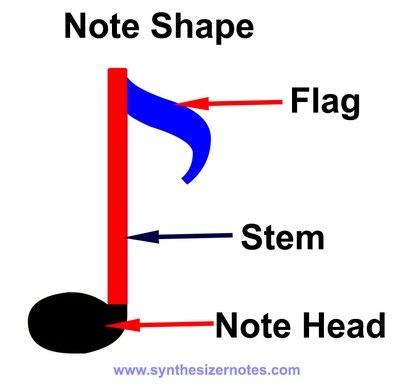
The key thing to remember is that all notes have a notehead, but stems and flags are optional, and the number of flags can vary.
The following image will give you a basic idea of the note shapes and their values or names.
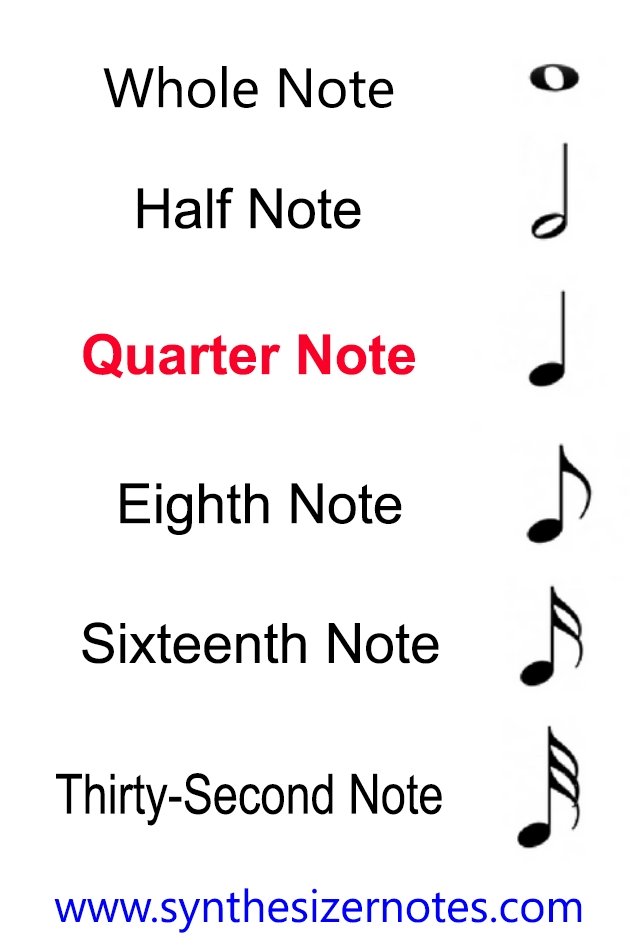
In the above image, a quarter note is shown in red. Why? Because in common time, i.e., 4/4, a quarter note represents one beat, or, in simple words, a quarter note is commonly considered one beat.
By taking this quarter note as a reference beat, we measure the duration of other notes as 2 beats, 4 beats, 1/2 beat, 1/4 beat, etc.
Notes Shapes and Their Names
The basic note shapes, from longest to shortest, are:
Whole Note:
- The whole note looks like a hollow oval, without a stem or flags.
- A whole note lasts for four beats, the longest duration in common notation. i.e., 4/4 time (common time).
- Imagine holding a note while counting “one, two, three, four.”
Half Note:
- A half note looks like a hollow oval with a single vertical stem.
- A half note lasts for two beats, but if you compare it with a whole note, it is half the duration of a whole note.
- Imagine holding a note for two numbers (example, one, two) while counting “one, two, three, four.”
Quarter Note:
- A quarter note looks like a filled oval with a single vertical stem.
- A quarter note lasts for one beat, the most common unit in many time signatures.
- If compared with a hole note, then held for one-fourth the duration of a whole note.
Eighth Note:
- The eighth note looks like a filled oval with a single vertical stem and a horizontal flag extending to the right.
- An eighth note represents half a beat. It lasts for half a beat, which means it takes two eighth notes to equal the duration of one quarter note, i.e., one beat.
Sixteenth Note:
- A filled-in oval with a stem and two flags.
- In 4/4 time, a sixteenth note lasts for a quarter of a beat. It takes four sixteenth notes to equal the duration of one quarter note.
In the above explanation, we have used the word beat.
What is a beat?
A beat is the basic unit of rhythmic time. It’s like the steady, recurring pulse that you tap your foot or clap your hands to when listening to a song.
Usually, a quarter note is considered one beat.
Now, the following image shows how many beat values are assigned to the note names.
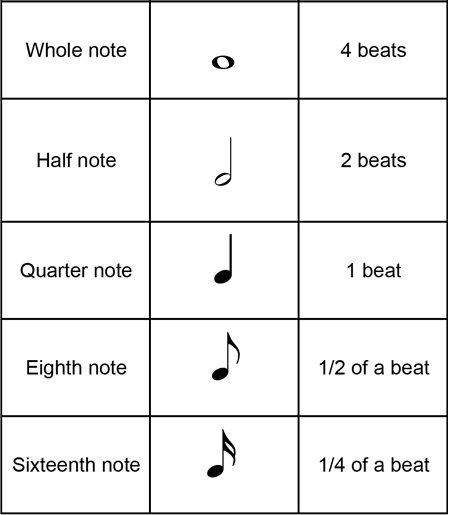
In common time, i.e., 4/4, each measure has four quarter beats.
Note Values as Slices of Pizza
This analogy of note values as slices of pizza helps us to understand:
- how note durations in music are like sharing or dividing a pizza, with each type of note representing a different portion or slice, and
- the duration of the note corresponding to the time it takes to consume that portion.
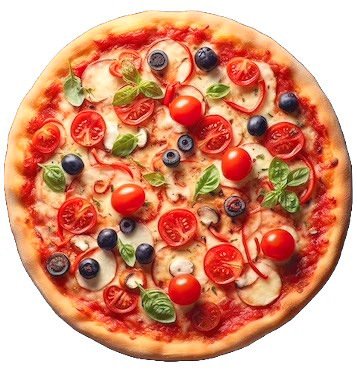
As we discussed in the “What is a Beat” section, a quarter note is typically considered one beat.
So in this pizza analogy, we will consider a quarter slice of pizza as one beat, or fundamental unit.
Whole Note: Entire Pizza
Imagine a whole pizza representing a whole note.
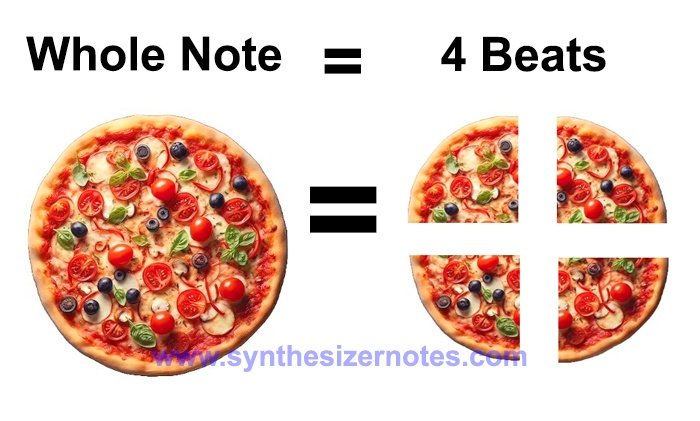
As it’s the largest and most complete form of a pizza, a whole note is also the longest-lasting note out of all note shapes and values.
A whole note is like having the entire pizza to yourself.
You need time to eat a whole pizza. In the same way, a whole note, which is four beats long, takes a lot of time.
So, the whole note is the longest note and lasts for the whole duration of a musical measure, i.e., the duration of four beats.
As shown in the above image, a whole pizza is made up of four quarter slices of pizza; similarly, the duration of one whole note is the total duration of four quarter notes, which is considered one beat.
Quarter Note: One Slice of Pizza
Now, let’s cut the whole pizza into four equal slices. Each slice represents a quarter note.
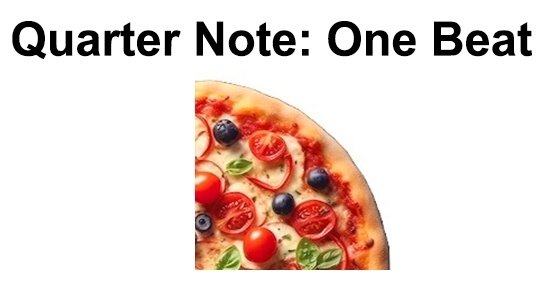
Just like a quarter of a pizza is a significant portion, a quarter note is a fundamental unit of musical time.
These notes are quicker because you’re dividing the pizza (or beat) into even smaller portions. It’s like taking a bite-sized portion of the pizza.
Half Note: Half Pizza
If we combine two quarter note slices, we get a half note. Just like two quarter slices make up half a pizza, two quarter notes form a half note.
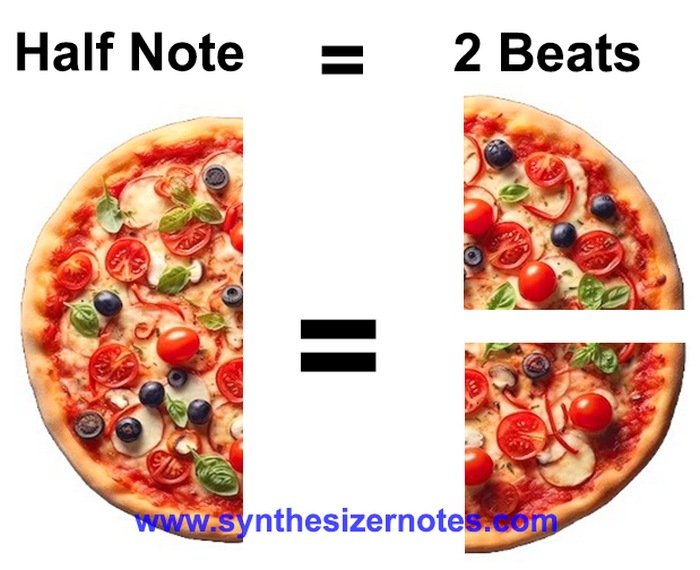
Now, imagine you share the pizza with a friend. Each of you gets half.
It’s twice as fast as a whole note because you’re splitting the time in half, just like sharing a pizza slice.
Similarly, a half note usually lasts for half the duration of a whole note. In common time (4/4), for example, where each measure has four beats, a half note would be held for two beats.
Eighth Note
Cutting a quarter note slice in half gives us an eighth note.
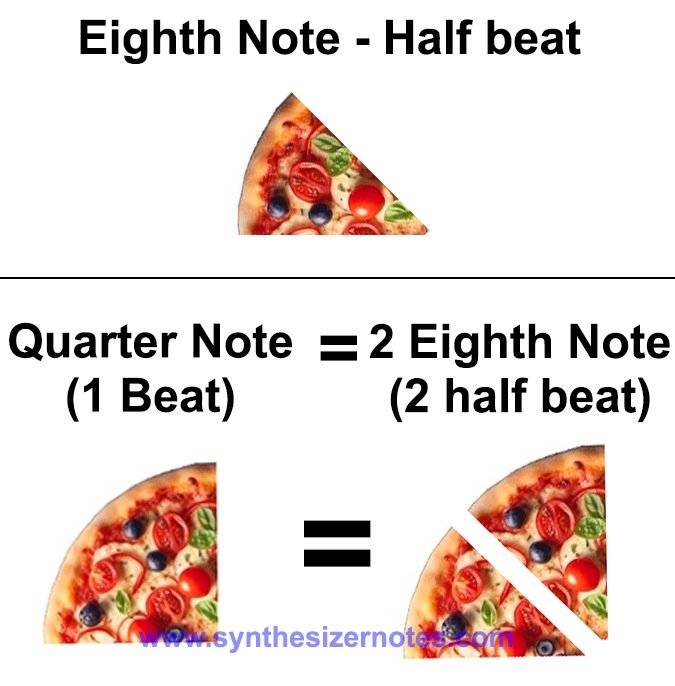
An eighth note is like having one of these smaller pizza bites.
Just like an eighth of a pizza is a smaller portion, an eighth note is a shorter duration note compared to a quarter or half note.
Sixteenth Note
If we cut an eighth note slice into half, we get a sixteenth note. A sixteenth note is like having one of these tiny pizza crumbs.
Just like a sixteenth of a pizza is a tiny piece, a sixteenth note is also a very short duration note. It’s the quickest note, representing a very brief moment in time.
Summary
- Note values and duration are crucial in music, as they determine the rhythm, timing, and silences of a piece.
- Understanding note values and duration is essential for beginners, as it helps them read and interpret sheet music accurately and maintain rhythm.
- The basic note shapes include whole notes, half notes, quarter notes, eighth notes, and sixteenth notes.
- These note shapes, such as hollow oval, oval with stem and flags, indicate the duration for which a note should be played.
- Beats are the basic unit of rhythmic time, and note names assign beat values to note names.
- A whole note is the longest-lasting note, lasting for the entire duration of a musical measure.
- A quarter note is a fundamental unit of musical time, representing a beat.
- Half notes are shorter and more efficient, forming a half pizza.
- An eighth note is a half beat, while a sixteenth note is a brief moment in time.
Conclusion
In conclusion, understanding note values is crucial for any musician.
So, whether you’re a beginner or an experienced musician, taking the time to study and practice note values will undoubtedly benefit your musical journey.
It will help you to accurately read and interpret sheet music, maintain proper timing and rhythm, and effectively communicate with other musicians during performances.


